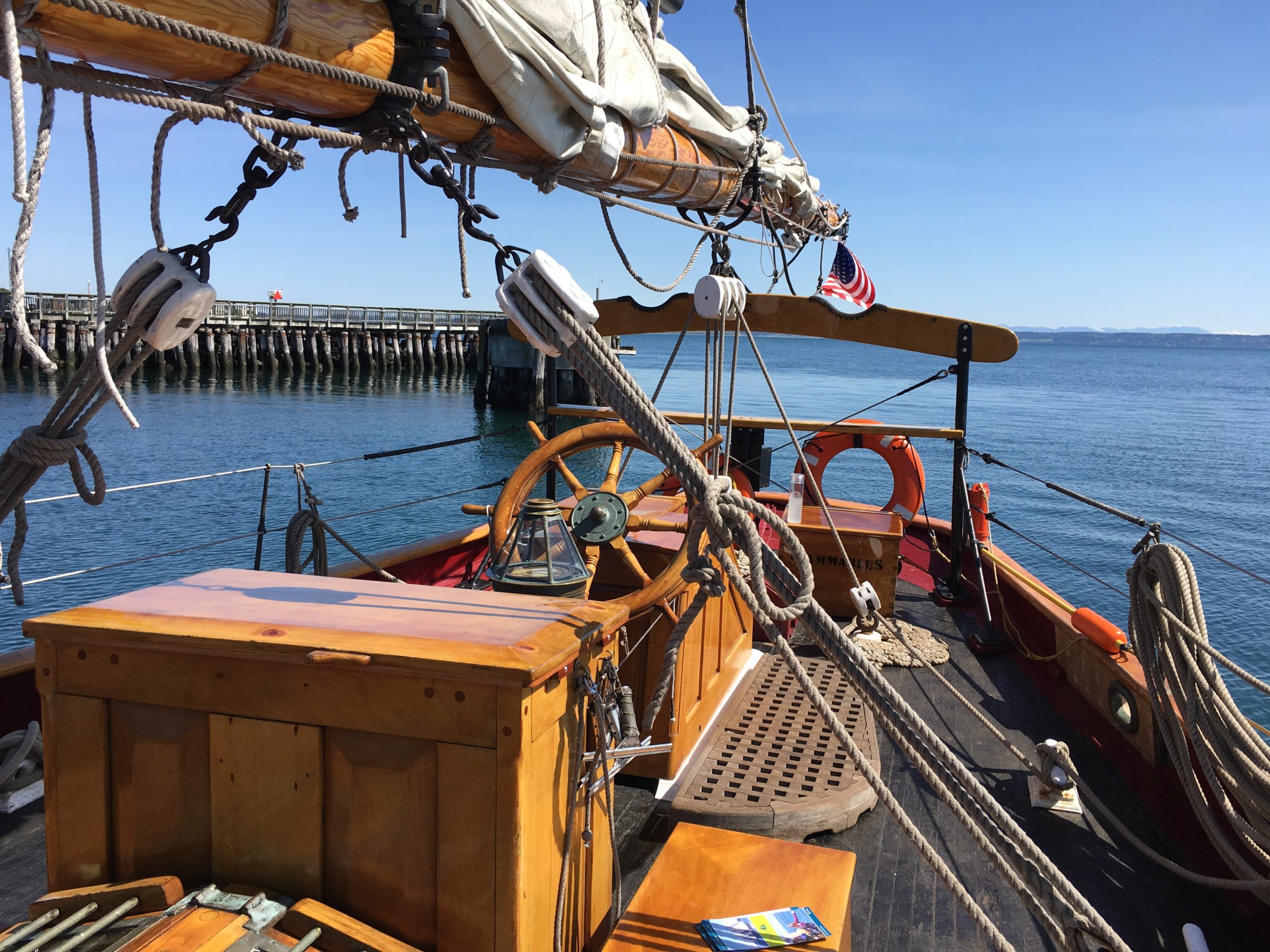Community through shared space and shared experiences

By Adrianna Horsey, PreserveWA Fellow
My time in Port Townsend began on a ship. Monday morning, with local coffee in hand, it only seemed fitting for participants of the RevitalizeWA conference to begin our time in Port Townsend on the century-old National Historic Landmark sailing ship named the Adventuress. The Adventuress is only one of two historic sail boats still actively operating on the West Coast, and it lives into its adventurous name as an experiential-education ship for youth. Through day and overnight educational programs, students learn about marine life, marine ecosystems, and how to sail on the Pacific Ocean.
During the morning, we stepped into the shoes of crew members as we explored the characteristics of the ship, including the newly repaired deck and the impressive, sturdy sails, and learned what it’s like during an Adventuress excursion. Crammed below deck, the ship houses a kitchen (or galley), marine toilets, storage, and two cabins allowing for 28 people to sleep on the ship. Our tour guide (a crew member) walked us through the history of the Adventuress, showing us pictures, and describing the youth programs. As we sat shoulder-to-shoulder along the edges of the main cabin, our tour guide reflected with us on the importance of teaching marine biology, sailing, and historic preservation. However, he concluded that most importantly, the Adventuress provides a sense of community created through shared space and shared experiences. It is that sense of community that leaves a lasting impact on all that board the ship.
As a student studying conflict resolution, I understand the influence that a sense of community can have on the ability for individuals, communities, and economies to thrive. A sense of community can build trust and value and can cultivate engagement. I traditionally view community development through lenses of my discipline, such as lenses of poverty, of minority population experiences, and of policy. However, I have rarely, if ever, viewed community development through the lenses of historic preservation or the Main Street Approach. How helpful it is to do so!
Through the RevitalizeWA conference, I was exposed to many approaches various places have taken to allow their communities to thrive. I was particularly struck by the opening plenary speaker, Nina Simon, who directs the Santa Cruz Museum of Art and History. Simon extends the reach of her museum through recognizing her community’s demographics, exploring possible interests, and expanding the traditional role of museums. Through revamping and reaching beyond the traditional guise of the Santa Cruz Museum of Art and History, a downtown plaza was created alongside the museum which includes restaurants, a play area for families, and spaces for live music. The museum, which once struggled to remain relevant to its community, now thrives and engages Santa Cruz’s diverse population through creative approaches to community development.
Community development is a creative art. Through the integration of walking spaces, local shops and restaurants, public art, annual events, preserving historic buildings, and even ships, communities are creatively improving opportunities for shared spaces and experiences. As the historic and active Adventuress creates shared space and experiences, so may our communities do the same for all who enter our places.
This article was published in the July 2018 issue of the Washington Trust’s quarterly magazine, This Place.
You can access a PDF copy of the full issue on our website here.
If you would like to receive a printed copy of our magazine, become a member.
